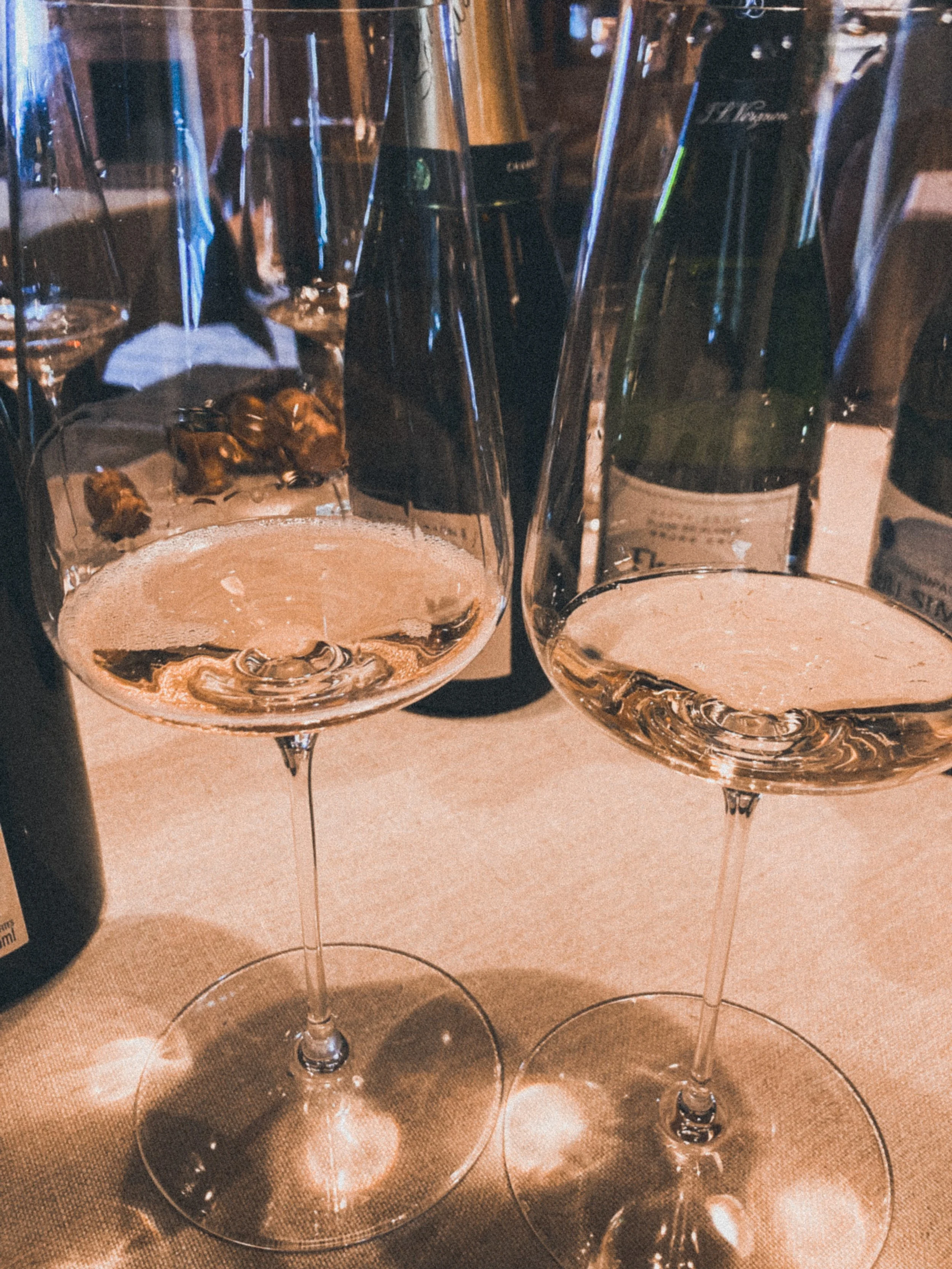5 Faces of Champagne
My love for Champagne is ever-increasing and the region never stops to fascinate me. I’ve got to taste 5 great wine ghosts one morning to find some colourful alternatives to the big Champagne brands on the wine list. Happy to see that the region is always bringing more terroir and individuality to the market, and thereby develops into a serious wine inside more and more customers’ head, and not just a celebratory item that you pop up at New Years’ Eve or in front of a birthday cake. All 5 were different characters and may serve a different purpose at the dinner table or spark conversations with worthy companions.
Pehu Simonet Face Nord Extra-Brut
This small family estate is based in Verzenay, in the Montagne de Reims. Their vineyards are located in the three neighboring villages: Verzy, Sillery and Mailly, all belong to the Grand Cru sites. As the label states, most vineyards in this bottling are facing Nord, which accentuate the freshness and vividness.
Organic, 100% Stainless steel, 80% Pinot Noir, 20% Chardonnay, 20% reserve wines, 42 months on the lees
The nose wasn’t so friendly and open in the first moments, then fruity merges with wild herbs and light etheric notes, maybe even saffron?! Fresh, stinging cellar perfume, pleasant-dirty yeastiness, becomes more and more open. Mouth: really fine perlage, elegant-salty finish, nice texture, fresh quince tones swim across with light yellow orchard notes. Sour dough again in the finish, like a semi-fermented bread and wild apple.
Henriot Brut Souverain
This non-vintage house stamp has been made for over 200 years by the estate, it was actually the first by the house in 1808.
The blend has around 45% Pinot Noir - 40% Chardonnay - 15% Meunier, selection from 29 crus, 30 to 50% of reserve wines, 3 years on the lees.
It was probably not the best bottle (or timing?!) for this bottle, typically Henriot presents itself livelier and more complex.
Nose was really quiet. Mouth: started with quite aggressive mousse, but really fine and small bubbles. The mouthfeel is sinuous, really cleansing texture, very crystalline aromatic and precise structure. The finale is dominated by freshly baked white bread, rather “limestony” than salty, really traditional Champagne pureness on the palate.
Vergnon Eloquence Blanc de Blancs Grand Cru
Vergnon is a small family estate in the heart of the Côte de Blanc, and posses vineyards in the Grand Cru sites of Oger, Le Mesnil-Sur-Oger and Avize. Thanks to the particularly deep limestone soils here, all Blanc de Blancs are characterized by a refined, clear style.
4 years on the lees, 100% Chardonnay, Grand Cru
The nose needs time. Even a decanter would be useful. The mouthfeel is extremely vibrant, white-electricity, maybe the longest development in the finale, after 10sec white-yeasty-animating notes. Beautiful dance of acidity and yeastiness. No fruit, no tannic grip. Wonderful complexity.
De Sousa Blanc de Blanc Extra-Brut Réserve Grand Cru
De Sousa has been a biodynamic pioneer in the Champagne region since 1999. They cultivate less than 10 hectares, mostly Chardonnay from old vines. Abot 70% of their vineyards are around 30 years old, and the remaining 30% is over 50.
Biodynamic, 100% Chardonnay, 25% reserve wines, Vinification: 100% tank
Perfume was ready right away, the most open out of them all. It was also the most “winey” of the 4 yet, meaning the base product probably wouldn’t have needed the second fermentation to become grandiose. Carpet-texture but not creamy! Not demanding, but not easy-drinking either. Almost no fruit, but still stuffing and aromatic, chalky, a mouthful without loosing elegance. Perfect balance between freshness “wineiness” and texture.
Bérêche & Fils Brut Réserve
This label has one of the strongest recognizability in Champagne for me. 9 ha own vineyards, they use a lot of oak, for the fermentation usually natural cork. House Bérêche has one of the lowest treatment frequency index in the Champagne region. It is also among the first to be certified High Environmental Quality.
Blending: 35% Chardonnay, 30% Pinot noir, 35% Meunier, with 35% reserve wines each year
Vinification: Slow fermentation in barrels and small steel vats, 24 to 36 months on lees
Wow, this is complexity and aromatic atom bomb! It is a lot of wine! Yellow (mostly ripe orange strangely)-red dancing fruit with the finest perlage and chalky texture on top. Reminds me a bit of a raspberry concentrate and a great cool climate white wine out of a big old cask. A mouthful yet precise, really “baroque”, utterly layered. True feeling of a “white-pressed” Pinot Noir.





